Maple Extract Vs. the "Real Deal"
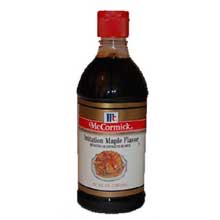 vs.
vs. 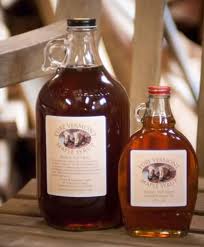
Maple extract... the maple flavor of the future?
I’ve been noticing more and more recipes that call for “maple extract.” It seems that the country is developing a taste for baking with maple, even as they eschew real maple syrup for substitute flavoring (it comes in natural and imitation flavors, just like vanilla).
While Vermont continues to insist on real maple syrup in its restaurants and even many fast food chains, will we be savvy enough to hold the line against it in our baked goods? I hope so. I would hate to have maple “flavor” from a bottle replace maple syrup from a jug.
Fortunately, this weekend’s 10th annual Maple Open House, sponsored by the Vermont Maple Sugar Maker’s Association, brought people out in droves to see, smell, and most of all taste real maple syrup from real maple syrup producers.
Our family visited Turkey Hill Farm in Randolph Center.
Turkey Hill Farm is a raw milk micro-dairy that also sells meat, eggs, and limited quantities of maple syrup (they bottle about 100 gallons each year in glass quart and ½-gallon size bottles).
They also are a regional chapter of the Weston A. Price Foundation and teach cooking classes (their raw milk cheese classes were among those recently shut down by the state pending further review). Here are some pictures from our visit:

The day was crisp and sunny. Wood smoke billowed from the chimney of the sugar house as we approached the structure. The sweet steam from the evaporator filled our nostrils and made us hungry for the waffle breakfast.
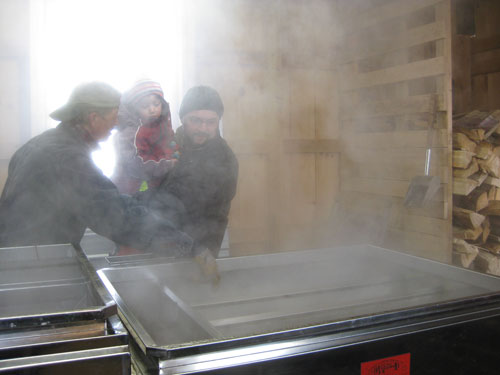
Inside the sunny room off of the farm store, we ate Belgian waffles made in a cast-iron waffle maker, local sausage and bacon, homemade raised donuts, and of course plenty of maple syrup!
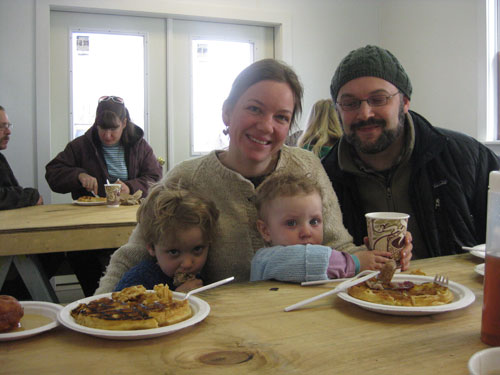
Afterward, we went back to the sugaring house to await the return of the draft horses with their wagon full of sap.
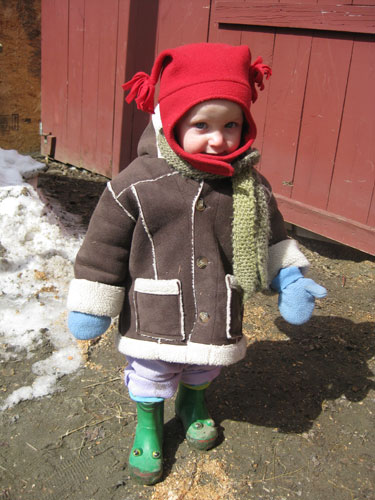
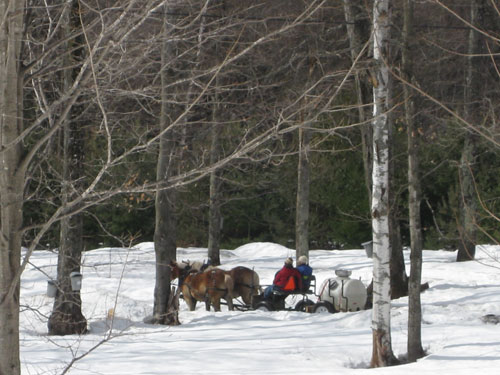

Before we left, we purchased a ½-gallon of “fancy” grade maple syrup – our treat each sugaring season (it’s often the first syrup of the season, and we find the taste wonderfully light and fresh). We only use it on pancakes and porridge, never in baking, because it’s so delicately flavored.
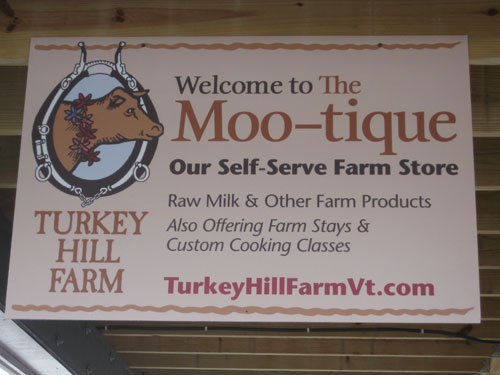
And while I haven’t quite made up my mind to champion the “terroir” of maple syrup, as Amy Trubek encourages in her research on the “taste of place” in the Department of Nutrition and Food Sciences at UVM, I do know that eating real maple syrup with the smell of wood smoke still in your nose – Well, there’s nothing else quite like it.